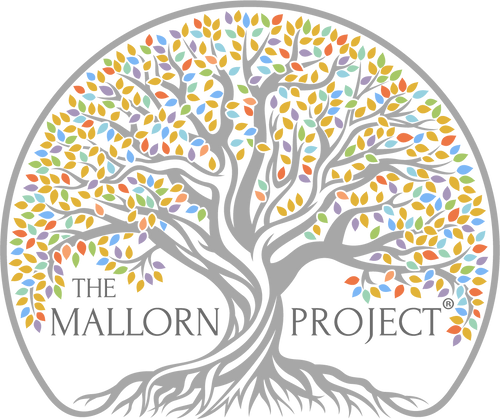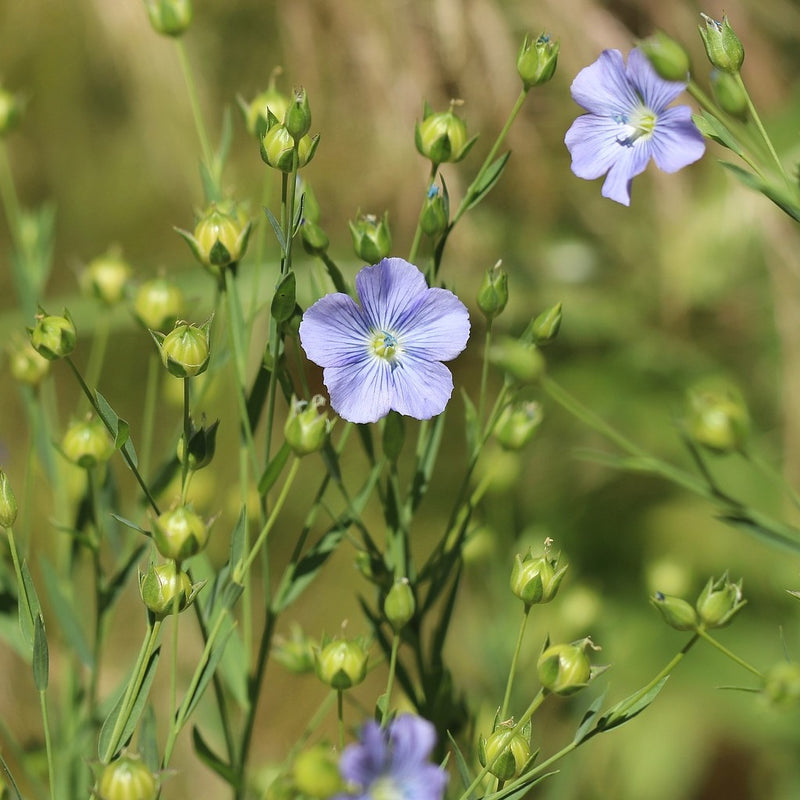WHY WE OFFER ONLY SUSTAINABLE PRODUCTS
Sustainability matters to us! That is why it is one of our core values, and why we strive to provide you with the sustainable and high-quality artwear and artdécor you deserve. Sustainability is a journey, and we are continuously growing our environmental and social consciousness. We’re starting with realistic goals and constantly looking for new ways to improve, so we welcome your comments and suggestions at Contact Us.
For artwear and artdécor, sustainability is based on a product’s trip across the supply chain for the clothing and home décor industries, which has 5 stages.
Stage 1 - Design: Products are designed.
Stage 2 - Sourcing: Raw materials are grown, extracted, or created. These are materials in their pre-processed state, and they are either "natural raw materials" found in nature or "synthetic raw materials" made by humans.
- Natural raw materials: Examples are fossil fuels (petroleum/crude oil, natural gas, and coal), minerals and stones, plants and trees, and wool and down. Some are non-renewable (e.g., fossil fuels) and others are renewable (e.g., plants and trees).
- Synthetic raw materials: Examples are plastics, whose main ingredient is polymers derived from natural raw materials that are non-renewable (e.g., fossil fuels) and, more recently, renewable (e.g., corn or cotton).
Stage 3 - Manufacturing: Materials are made into products. This includes factories that make our blank products, and printers that add our designs to them.
Stage 4 - Distribution & Retail: Products are delivered to consumers.
Stage 5 - Consumer: Consumers use products until their use ends ("end-of-life").
Learn more about the conventional and sustainable supply chain.
OUR SUSTAINABLE PRODUCTS ARE "SUSTAINABLY PROCESSED" AND "SUSTAINABLY MADE"
Knowledge is power and shopping informed is important. Many businesses use words like “conscious”, “sustainable”, “eco-friendly” and “green” to hide or “greenwash” their unsustainable practices and products. Unfortunately, there is no universal definition or symbol for “sustainable product” and the number of different definitions and symbols creates a lot of confusion for consumers.
Since we value transparency, we believe it is important to tell you what we mean. Our sustainable products meet at least 1 of these 2 criteria:
- Sustainably processed – how it’s made (farms/forests, mills, factories, and printers)
- Sustainably made – what it’s made of (materials)
In addition to meeting our definition of a sustainable product, some of our products are “certified”, meaning they have a label that proves they meet third party sustainability standards. These certifications are referenced in our product descriptions (learn more below). It is important to note that hundreds of certifications are available, both national and international, and since they are voluntary, brands choose what certification(s) best fits them based on their key sustainability priorities.
OUR SUSTAINABLE PRODUCTS HAVE "SUSTAINABILITY FEATURES"
Our sustainable products have these sustainability features:
| Sustainably Processed |
|
| Sustainably Made |
|
Our sustainable products are ranked and filtered according to the number of sustainability features they have, into “Gold Star”, “Silver Star”, and “Bronze Star":
You can find the sustainability rating of each product in its title (e.g., “Gold Star Hoodie”, “Silver Star Hoodie”, or “Bronze Star Hoodie”), and find details about its sustainability features under “product description”. Note these details are based on information provided to us by third parties (e.g., product manufacturers and print-on-demand suppliers), which we are unable to independently verify.
Learn more about sustainability features and certifications below.
Sustainability Features of Our "Sustainably Processed" Products
Here is some more information about the sustainability features of our sustainably processed products.
- Stewardship: Responsible planning and management of natural resources (e.g., regenerative farming and forestry) and animal welfare standards. Certification labels and memberships exist, such as: Forest Stewardship Council (FSC®) and PETA-approved VEGAN.
- Responsible Methods: Responsible sourcing, manufacturing, and printing methods with reduced environmental and social impact, such as less energy use, less resource use, less carbon dioxide (CO2) emissions and other pollution, and less waste. Certification labels and memberships exist, such as: Oeko-Tex® and bluesign®, focused on chemical usage, and Global Recycled Standard (GRS).
- Fair Trade: Fair price for products, living wage for workers, fair, safe and healthy work conditions, and economic empowerment of small-scale producers at bottom of economic ladder or from marginalized communities. Certification labels and memberships exist, such as: Fairtrade (global), Fair Trade Certified™ (US), Worldwide Responsible Accredited Production (WRAP), and Fair Wear Foundation (FWF).
- Made to Order: Products are made to order, one at a time, or in small batches. Certification labels and memberships exists, such as: Nest Seal of Ethical Handcraft.
Sustainability Features of Our "Sustainably Made" Products
Here is some more information about the sustainability features of our sustainably made products.
- High Quality Materials: High quality materials and construction, so products are durable and long-lasting. Buying these products means reducing new purchases.
- Natural, Renewable Materials: Natural, renewable materials with low environmental impact. These are plant-based, animal-based, and semi-natural (learn more below). Certification labels and memberships exist, such as: Global Organic Textile Standard (GOTS), Organic Content Standard (OCS), Responsible Wool Standard (RWS), The Good Cashmere Standard, The Sustainable Fibre Alliance (SFA), Advanced Global Traceable Down Standard (Advanced Global TDS), Responsible Down Standard (RDS), and Leather Working Group (LWG).
- Recycled Materials: Recycled natural or synthetic materials. The higher the percentage, the more sustainable the product. These materials use waste, thereby reducing the need for "virgin" materials, including virgin plastic (e.g., virgin polyester, spandex, nylon, acrylic, polyamide, polypropylene, and PVC) which is made from fossil fuels (especially petroleum) and thus has high environmental impact (learn more below). Certification labels and memberships exist, such as: Global Recycled Standard (GRS).
- Water/Plant-Based Inks or Non-Toxic Dyes: No ink is 100% free from chemicals or non-renewable resources. The best inks are either water-based or plant-based and emit as few volatile organic compounds (VOCs) as possible. What ink type is used depends on the printing method and printing substrate. Certification labels and memberships exist, such as: GREENGUARD and GREENGUARD Gold Certification.
- Recyclable or Biodegradable/Compostable Materials: Recyclable materials can be processed and used again, either as a fresh supply of the same material or to produce a different material. Biodegradable/compostable materials can break down into natural elements biologically by microorganisms (e.g., bacteria or fungi), in the right environmental conditions (e.g., temperature, UV light, oxygen, etc.). The fact that a product is made from recycled or biodegradable/compostable materials does not guarantee that it will be accepted by your local recycling or composting centre. Certification labels and memberships exist, such as: Cradle to Cradle.
Let’s do a deeper dive into natural, renewable materials and recycled materials.
A Deeper Dive Into Natural, Renewable Materials
As noted, natural, renewable materials with low environmental impact are plant-based, animal-based, and semi-natural.
Plant-based natural, renewable materials:
- Organic Fibers, including Organic Cotton: Unlike conventionally grown fibers (“conventional fibers”), these are grown from non-GMO seeds, without pesticide, insecticide, or fertilizer, and using responsible farming methods. Important because organic fibers have the same quality as conventional fibers but reduced environmental impact. Certification labels and memberships for organic fibers exist, such as: Global Organic Textiles Standard (GOTS) and Organic Content Standard (OCS).
- Hemp: Comes from the hemp plant, which is fast-growing, does not need much water, energy, pesticide or fertilizer, is good for soil, and can be grown in the same place for a long time without exhausting it. Important because it is comfortable, breathable, and durable.
- Linen: Comes from the flax plant, which has a high rate of carbon absorption and can rehabilitate polluted soil, and its production uses fewer resources than cotton. Important because it has similar properties to hemp.
- Ramie: Comes from the stinging nettle plant. Important because it is strong, holds shape, reduces wrinkling, has silky lustre, and is akin to linen in absorbency.
- Natural Rubber: Produced by trees (e.g., hevea) and plants (e.g., guayule) and replaces synthetic rubber, which is petroleum-based and energy-intensive to manufacture. Important because it is strong and stretchy, biodegradable, and easy to recycle. Certification labels exist, such as: Fair Rubber Association.
- Natural Resin: A type of resin, defined as a compound that starts in liquid form and hardens to solid in certain conditions. Comes from plant secretions (e.g., pines and firs) and has less environmental and social impact than synthetic resin, which is a plastic, high impact to produce, toxic before it cures, and not biodegradable. Important because it is generally insoluble in water and used as varnishes, adhesives, inks, and additives in paint media.
Animal-based natural, renewable materials:
- Alpaca: Comes from alpacas, which have less environmental impact than cashmere goats. Important because it is fine, light, a thermal insulator, water-repellant, fire resistant, and contains almost no grease (“lanolin”).
- Responsible Silk: Protein fiber spun by silkworms, but conventional silk requires chemicals and kills the silkworm whereas responsible silk is organic and/or does not kill the silkworm. Important because it is strong, smooth, lustrous, and biodegradable. Certification labels exist, such as: GOTS.
- Responsible Wool: Comes from sheep, but conventional wool has high environmental impact and subjects sheep to unnecessary harm, whereas responsible wool is organic and meets animal welfare standards. Important because it is long-lasting, breathable, absorbent, odor-repelling, and insulating. Certification labels exist, such as: Responsible Wool Standard (RWS) and GOTS.
- Responsible Cashmere: Comes from cashmere goats, but conventional cashmere has high environmental impact whereas responsible cashmere has reduced impact. Important because it is soft, lightweight, breathable, and warm. Certification labels and memberships exist, such as: The Good Cashmere Standard and The Sustainable Fibre Alliance (SFA).
- Responsible Down: Comes from birds like geese and ducks, but conventional down subjects birds to unnecessary harm like force-feeding or live-plucking, whereas responsible down meets animal welfare standards. Important because it is insulating, light, and long-lasting. Certification labels and memberships exist, such as: Advanced Global Traceable Down Standard (Advanced Global TDS) and Responsible Down Standard (RDS).
- Responsible Leather: Made of dead animal skin, generally from animals raised for meat, so does not require extra resources to produce, but conventional leather has high environmental and social impact (mostly linked to the tanning process), whereas responsible leather has a reduced footprint. Important because it is versatile, long-lasting, ages well, and biodegrades in 10-50 years. Certification labels and memberships exist, such as: Leather Working Group (LWG).
Semi-natural, renewable materials:
- Lyocell (branded as "Tencel®" and "Refibra®"): A type of rayon, which is made from regenerated cellulose generally derived from wood pulp, but it is made from responsibly sourced wood pulp dissolved in non-toxic organic solvent. Important because it is soft, light, absorbent, breathable, durable, versatile, biodegradable, and can replace its rayon relatives conventional viscose (“Artificial Silk” or “Art Silk”), modal, and bamboo, which have higher environmental impact.
- Responsible Viscose: A type of rayon, but it is made from responsibly sourced wood pulp. Important because it can replace conventional viscose.
- Orange Fiber: Made from orange skins derived from juice industry waste. Important because it is silk-like, lightweight, can be opaque or shiny, and blends with other materials.
- Pineapple Fiber ("Piñatex"): Made from mix of pineapple leaves (using by-products of pineapple harvests so it does not require extra resources to produce), petroleum-based resins, and bio-plastic. Important because it is flexible, breathable, and can replace animal leather, but it is not biodegradable.
- Cupro: Artificial cellulose fiber made from cotton wastes (“Linter Cotton”) in a closed loop, meaning water and non-toxic chemicals used to produce it are constantly reused until exhausted. Important because it is biodegradable and can replace conventional viscose.
A Deeper Dive Into Recycled Materials
As noted, recycled materials are synthetic and natural, and they are distinguished from new or "virgin" materials.
Recycled Synthetic Materials:
- Recycled Polyester (rPet): Made from plastic bottles and, in future, possibly from ocean plastics or by chemical-recycling technologies. Reduces dependence on petroleum as a raw material source, diverts waste from landfills and oceans, and its production requires fewer resources and generates fewer CO2 emissions than virgin polyester, but it is non-biodegradable. Important because it builds lightweight materials that dry quickly and blends well with natural materials like cotton, which increases the lifespan of a product.
- Recycled Spandex (Elastane, branded as Lycra®): Recycled from pre-consumer waste fibers, using scraps. Reduces dependence on petroleum as a raw material source, diverts waste from landfills, and its production requires fewer resources than virgin spandex. Important because it is strong, stretchy, and fast drying.
- Recycled Nylon: Made from old fishing nets, nylon carpets, nylon tights, etc. Reduces dependence on petroleum as a raw material source, diverts waste from landfills, and its production requires fewer resources than virgin nylon. Important because is durable, strong, lightweight, and has moisture-wicking properties.
- Recycled Resin (branded as TerraCast®): Made primarily or entirely from recycled materials (including virgin resin and other post-consumer materials) and itself recyclable. Reduces waste and environmental impact associated with virgin synthetic resin production. Important because it is customizable, lightweight, strong, durable, and maintenance-free.
Recycled Natural Materials:
- Recycled Cotton: Recycled using textile leftovers or old garments. Prevents additional textile waste and its production requires fewer resources than conventional or organic cotton, but its quality can be lower than virgin cotton.
- Recycled Wool: Recycled from pre-consumer sources (e.g., factory scraps) and post-consumer ones (e.g., returned apparel). Extends lifespan of already-produced fiber at a reduced environmental cost, since producing virgin wool is resource-intensive, diverts used wool items from landfills, and avoids use of chemicals for dyeing.
- Recycled Cashmere: Recycled from pre-consumer factory scraps. Extends lifespan of already-produced fiber at a reduced environmental cost, since producing virgin cashmere has led to overbreeding of goats, decreased fiber quality, and environmental degradation.
- Recycled Down: Reclaimed from items like bedding and cushions, so reduces waste.
- Recycled Wood, Metal, and Stone: Recycled from pre-consumer and post-consumer sources.
You might be surprised to see that certain materials often labelled as “green” are not on our list, such as conventional cotton and bamboo and synthetic ("vegan") leather. Conventional cotton and bamboo have high environmental impact. Synthetic leather is usually made of PVC or polyurethane, so while it is better than conventional leather in terms of animal welfare, it is not a responsible alternative.
Let's do a deeper dive into third party sustainability certifications and memberships.
A Deeper Dive Into Third Party Sustainability Certifications and Memberships
Hundreds of certifications and memberships for sustainable clothing and home décor are available. All require a business to meet certain criteria or standards. However, they are generally voluntary rather than government-mandated and produced by different entities (e.g., individual company, industry trade group, or international organization). Some certifications are more stringent than others, and the best ones are verified by independent auditors.
Here are some examples of key sustainability certifications and memberships, including ones mentioned above.
Stewardship and Responsible Methods:
|
Forest Stewardship Council (FSC)
|
Certifies products come from responsibly managed forests that provide environmental, social, and economic benefits.
|
|
PETA
|
Approves companies that do not conduct or commission animal tests on ingredients, formulations, or products and whose products do not contain animal-derived elements. For other animal welfare certifications, see “Natural, Renewable Materials” below.
|
|
Oeko-Tex® (Standard 100)
|
Safety standard for assessing harmful substances in fabrics.
|
|
bluesign®
|
Focuses on responsible chemical usage at each supply chain stage, certifying products that consist of at least 90% approved textiles and 30% approved accessories.
|
|
Global Recycled Standard (GRS)
|
World’s leading standard for recycled textiles, certifying recycled materials at all supply chain stages based on environmental and social impact.
|
Fair Trade:
|
Fairtrade (Global) and Fair Trade Certified™ (USA)
|
Certifies that a product was produced and traded according to rigorous environmental, social, and economic Fair Trade standards.
|
Worldwide Responsible Accredited Production (WRAP)

|
World’s largest factory-based certification program for manufacturers of apparel and other sewn products, based on social impacts. 3 certification levels, Platinum, Gold, and Silver.
|
Fair Wear Foundation (FWF)

|
Works with apparel brands, garment workers, and textile industry influencers to improve labour conditions in factories.
|
Made to Order:
Nest Seal of Ethical Handcraft

|
Certifies products that are handmade under fair conditions, based on environmental and social impacts.
|
Natural, Renewable Materials:
Global Organic Textile Standard (GOTS)

|
Worldwide leading certification body for organic fiber production, based on environmental and social impacts; tracks flow of raw materials from source to final customer, including certifications at each production stage.
|
Organic Content Standard (OCS)

|
Verifies presence and amount of organic material in product, and tracks flow of raw materials from source to product, based on environmental impact only.
|
Responsible Wool Standard (RWS)

|
Certifies that sheep farmers meet rigorous animal welfare and land management requirements.
|
The Good Cashmere Standard

|
Certifies cashmere producers engaged in responsible production, based on environmental and social impacts.
|
The Sustainable Fibre Alliance (SFA)

|
Certifies cashmere producers (herders and processors) engaged in responsible production, based on environmental and social impacts.
|
Advanced Global Traceable Down Standard (Advanced Global TDS)

|
Certifies that down in garments and other products comes from responsible source that respects animal welfare and can be transparently traced.
|
Responsible Down Standard (RDS)

|
Certifies that down and feathers come from animals that have not been subjected to any unnecessary harm.
|
Leather Working Group (LWG)

|
Certifies leather manufacturers, based on environmental and social impacts.
|
Recycled Materials:
Global Recycled Standard (GRS)

|
World’s leading standard for recycled textiles, certifying recycled materials at all supply chain stages based on environmental and social impact.
|
Water/Plant-Based Inks or Non-Toxic Dyes:
GREENGUARD Certification and GREENGUARD Gold Certification

|
Certifies products for low chemical emissions, including VOCs.
|
Recyclable and Biodegradable/Compostable Materials:
Cradle to Cradle

|
Certifies products that are completely recyclable or biodegradable and made with lowest environmental and social impact manufacturing processes.
|
More blog posts you might like:







